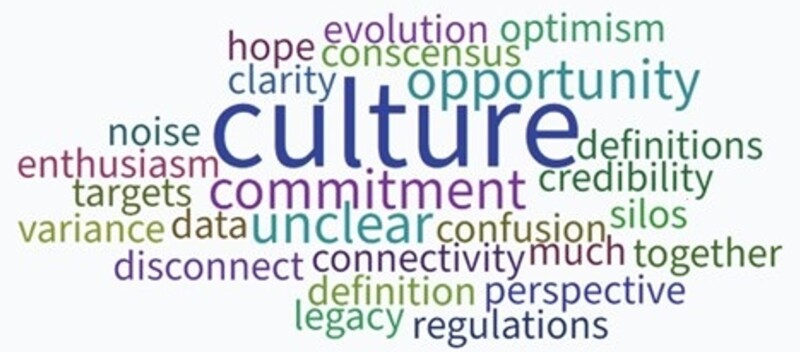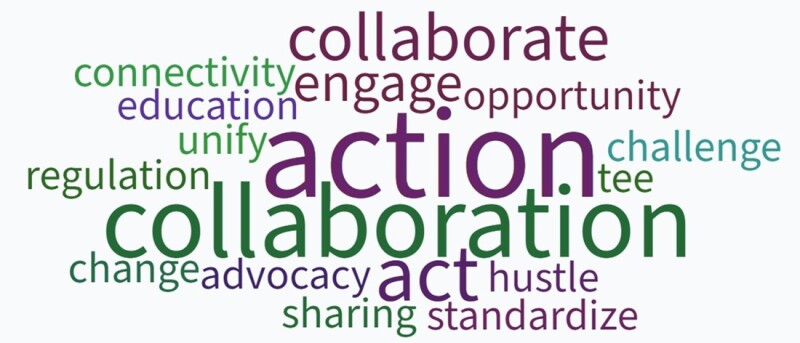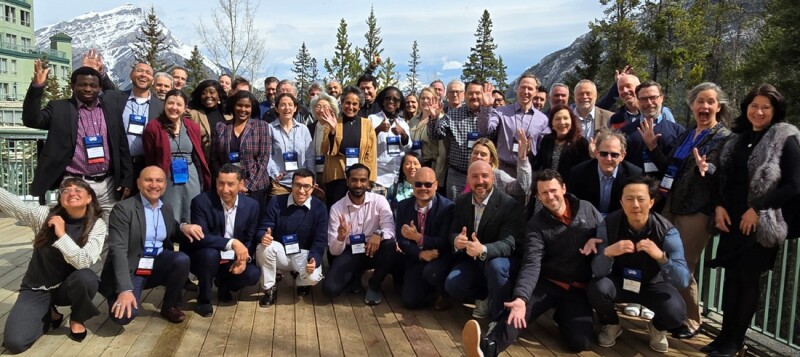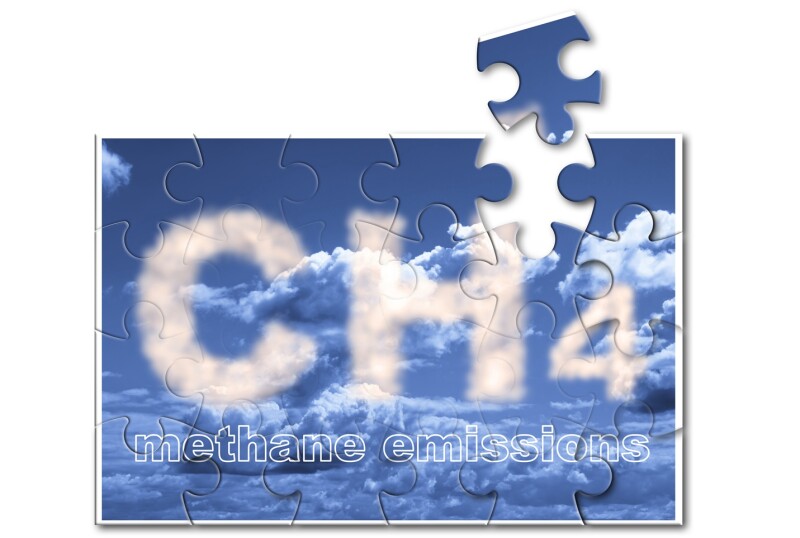This article was written by the leadership of the SPE Methane Emissions Management Technical Section (MEMTS), established in 2022, in collaboration with global subject-matter experts who participated in the 2024 MEMTS Forum held in Banff, Canada. The forum, centered on the theme “Methane Emissions Management for a Sustainable Future,” brough together diverse perspectives and experience to address the evolving challenges and opportunities in global methane mitigation.
By David Shackleton, SPE, Brilliant Harvest and Methane Emissions Management Technical Section (MEMTS) Past Chair,
Linda Battalora, SPE, Colorado School of Mines and MEMTS Chair,
Rosa Swartwout, SPE, MEMTS Emeritus Chair,
Babatunde Anifowose, SPE, Coventry University and MEMTS Vice Chair,
Ensan El-ayoubi, SPE, Aramco, MEMTS Program Chair,
Meghan Cornwall, SPE, Champion X,
Drew Pomerantz, SPE, SLB,
Willow Liu, SPE, MEDENG and MEMTS Community Webmaster,
and
Audrey Mascarenhas, SPE, Questor Technology and MEMTS Director of US and Canada
Prelude to Action
The urgency of methane emissions reduction in the oil and gas sector demands a strategic approach to change management. With 2030 emissions reduction targets looming and significant economic influences before then, companies must implement structured change initiatives that drive measurable results. This speaks to United Nations Sustainable Development Goal (SDG) 7 (Affordable and Clean Energy) and SDG 13 (Climate Action) and is not just a technological challenge; it is a management and cultural one. Success hinges on fostering a shift in industry mindset, where emissions reduction is embedded into operational design and decision-making rather than seen as a regulatory burden.
Stakeholder engagement plays a pivotal role in accelerating progress. Identifying key stakeholders and ensuring alignment in both the motivation and resources to act is essential. Yet, some industry players appear to remain indifferent, responding only when financial or regulatory pressures compel them to do so. Addressing this disparity requires a combination of incentives, funding mechanisms, and regulatory frameworks that support both large operators and smaller industry players.
Equally critical is the need for clear and effective communication across all levels of an organization. A cultural shift toward emissions reduction cannot occur without alignment between management, frontline workers, and regulators. Establishing a baseline for emissions, improving data quality, and integrating methane-reduction strategies into routine operations require buy-in from all stakeholders. Ultimately, reducing emissions is less about technological breakthroughs and more about management excellence, financing solutions, and collaborative industry efforts to make methane reduction a priority rather than an afterthought.
To this end, sustainability and climate imperatives offer opportunities for integrated efforts to close the gap to achieve methane reduction. The need exists to design opportunities for diverse, exemplary, and reluctant stakeholders to convene in a noncompetitive setting to exchange information about obstacles, best practices, applications, and regulatory compliance. Through strong alliances and frank conversation, a realistic approach toward standardization materializes.

Evolving Regulatory Landscapes
Methane emissions abatement regulations have made some progress in reducing greenhouse-gas (GHG) emissions, but several issues remain. Global initiatives such as the Global Methane Pledge—led by the United States and the European Union to cut methane emissions by 30% by 2030—have pushed for stricter oversight. Several countries have implemented various policies, including mandatory leak detection and repair programs, flaring restrictions, and improved waste management practices. The effectiveness of these regulations, however, is hindered by several challenges.
While the International Energy Agency has reported that solutions that lower methane emissions could be deployed today at little—or even negative—cost, one major challenge is the economic burden on industries, particularly small and medium-sized enterprises, which struggle to afford the necessary technology and infrastructure upgrades to comply with new rules. The regulations have primarily focused on routine methane emissions from flaring and venting, which are difficult to detect and quantify accurately using traditional methods such as optical gas imaging and Method 21 but are commonly detected by advanced monitoring technologies that may not be accessible to all nations. As a result, the oil and gas sector faces high costs in measuring, quantifying, and then upgrading equipment to minimize methane leaks. The significantly larger nonroutine flaring and venting methane emissions have been excluded from most regulations, and, as a result, the industry has missed an opportunity to reduce substantial methane emissions for a very low cost. Interestingly, countries without the financial resources for advanced technologies are tackling their methane emissions by focusing their regulations on air quality and human health effects and banning flaring and venting. Additionally, these countries have not differentiated between routine and nonroutine emissions, leaving an opportunity to reduce emissions at the lowest possible cost with the greatest effect.
Further complicating efforts are the slow pace of regulation, regulatory complexity, and inconsistency. The evolving and often fragmented nature of methane regulations creates uncertainty, especially when there are debates over federal vs. state/provincial or global vs. regional/national control. This regulatory fragmentation can lead to inefficiencies and contradictions as different jurisdictions adopt inconsistent policies, making compliance difficult for multinational companies and industries operating across multiple regions. The adaptability of governments to swiftly and efficiently adopt necessary regulations is often lacking, further stalling progress. There is also a disparity in enforcement, often resulting in low compliance with regulation.
Despite these hurdles, global cooperation, sharing of best practices, and financial support where it is needed are essential to making methane-reduction efforts successful. Strengthening international agreements, simplifying regulations, investing in innovative solutions, and ensuring equitable access to methane reduction technologies will be key to overcoming these challenges and achieving long-term reductions in methane emissions.
Methane Measurement
To make strategic decisions about methane mitigation, it is important to understand the methane inventory of a facility, basin, or region. Industry has acknowledged, however, that existing emission factors and calculation models are flawed and can lead to incorrect emission data. Different methane mitigation solutions and reporting systems use various emission factors and models, which leads to discrepancies in data and, consequently, a lack of trust among industry, the public, and governing bodies about reported data. Because of increasing regulations, as well as public perception of companies, examination of the methods, models, and emission factors used is becoming increasingly important so that standardized and accurate data can be reported. These issues are not just present in public or regulatory reports; they also affect internal operator reports.
Within companies, a better understanding of the importance of accurate reporting is needed. Stakeholders within companies have different motivations as well as tools and reporting requirements that lead to mismatched data. Organizational leaders need to lead clear internal conversations around the company’s work to mitigate methane, be transparent about reporting, and discuss the consequences of not reporting accurately. A strong culture of accurate reporting will enhance a company’s public perception, decrease fines from regulatory bodies, and show clear improvements in methane reduction over time. Furthermore, with a strong internal system of reporting, all stakeholders will be able to provide the same data and explanation when a third party reports an emission or when an audit is conducted.
As more regulations allow third-party data to report emission events, companies will be called out publicly more often. It is crucial that operators can show reliable data surrounding events. Finding the right technology, accurate quantification estimates, and emissions data management systems that fit into the existing operational processes of a company will greatly enhance the ability to have data in the right format. Without accurate data, managing mitigation will be difficult as the effects of inaccurate data, starting at the facility level, snowballs as data aggregates, leading to a moving target of how much methane is being released.
Nonregulatory Reporting
As oil and gas companies work hard to pursue the energy transition, mitigate their effect on climate change, and reduce their overall environmental footprint, they work harder to accomplish this while providing reliable and affordable energy to their customers. They do all this fully knowing that it is imperative for them to stand out as leaders or pioneers in reducing their carbon intensity, compared with their peers. Further, in a growing field where several oil and gas companies have already announced their decarbonization plans, it is no longer sufficient for them just to declare their ambitions to achieve net-zero Scope 1 and Scope 2 GHG emissions by a specific future date. Companies are finding that focus is required on methane emissions as an environmental metric separate from carbon intensity. To that end, companies are electing to report on their successful reduction of upstream methane emissions in tons and report on reducing upstream methane intensity in percentages. The term “near-zero upstream methane emissions intensity” refers to a ratio of gas loss to gas produced, such as ones reported by the Oil and Gas Climate Initiative, lower than 0.20%.
Therefore, in parts of the world where reporting methane emissions is not yet required by regulations, focus is placed on reporting accuracy for the sake of inclusion in publicly shared performance data. Several oil and gas companies report methane emissions as part of their annual performance and include these numbers in their sustainability reports, among other publicly shared information. As companies make public announcements on their intentions to reduce GHG emissions in general and methane emissions in particular, more attention is placed on the scope, level, methods and tools used for methane detection, as well as accuracy of quantification of methane emissions. To enable this, companies use rigorous regimens to make sure that their methane emissions are qualified by an external third party before reporting them publicly.
The African Perspective on Methane Emissions Abatement
The world and, indeed, SPE cannot fully address the issue of methane emissions and abatement without a holistic approach across geographic divides. To this end, the African Petroleum Producers Organisation (APPO) is an important stakeholder to partner with regarding methane emissions and gas-flaring mitigation on the continent. APPO has a strategic commitment to the sustainable and environmentally friendly exploitation of crude oil and gas resources by its 18-member countries. Therefore, moving forward, part of the discussion must include the practical deployment of best available technologies to maximize the hitherto vented methane and flared gases to ensure greater access to cheap and affordable energy on the continent—SDG 7—and that the Nationally Determined Contributions by member countries toward addressing climate change are attainable—SDG 13. In addition, APPO has the institutional framework and network within the continent that can be truly useful in achieving the immediate goals of the SPE MEMTS, and this must be explored going forward.
Global Abatement Solutions
Achieving meaningful methane reductions requires more than just technology. It demands collaboration, innovation, and regional coordination. While numerous abatement technologies are available, their adoption is highly context-dependent, shaped by regional regulations, infrastructure readiness, and economic feasibility. What proves effective in one operational setting may not work elsewhere, underscoring the limitations of a one-size-fits-all approach. Many promising solutions remain in trial phases and require broader industry engagement and validation before becoming standard practice.
Broad industry participation is critical to scaling these technologies. Cooperative efforts among operators, regulators, and technology providers can accelerate deployment far more effectively than isolated initiatives. Joint technology trials, shared infrastructure investments, and knowledge-exchange programs can lower costs and improve feasibility, especially for smaller operators that may struggle with capital-intensive upgrades.
Abatement strategies should be tailored to specific geographic and operational environments. For example, regional methane measurement initiatives—such as coordinated aerial or satellite-based monitoring campaigns—could be more effective and cost-efficient than isolated site assessments. Instead of individual companies deploying their own detection efforts, regional consortia could conduct large-scale surveys, ensuring greater coverage, cost-sharing, and data consistency.
Despite technological progress, widespread adoption faces economic and logistical hurdles. Addressing these challenges requires:
- Pooling resources to fund large-scale technology validation programs
- Aligning regulatory frameworks to incentivize early adoption
- Encouraging industrywide data standardization to enhance transparency and reporting accuracy
By leveraging cross-sector partnerships, the oil and gas industry can achieve critical mass in technology deployment, ensuring methane abatement strategies move beyond trial phases into full-scale implementation. A unified approach will be key to transforming emerging solutions into standard operating procedures, driving the sector closer to its 2030 emissions reduction goals.
Driving Change on a Global Scale—Transformation Through Innovation
While early attention to methane emissions came primarily from Europe and North America, reducing methane emissions is now a priority globally. Changing work practices to reduce methane emissions must occur across the globe, because methane emissions are spread out across the planet much like production is.
Today, the following changes are happening that contribute to the proliferation of methane reductions in all countries:
- Technological development—While some methods to measure and mitigate methane emissions have been available for years, a wide variety of new methods have been developed and tested recently. Because no single technology can do all things in all places, this diversity of new technologies increases the likelihood that operators in a particular country will find a technology suited for their assets.
- Public commitments—In organizations such as the Oil and Gas Decarbonization Charter, operators across the globe have committed to reducing methane emissions, making their intentions clear to their employees, their supply chains, and their investors.
- Capacity building—Organizations such as Methane Guiding Principles have established programs where operators with long histories of reducing methane can share knowledge with operators who are just beginning their methane-reduction journeys, helping countries quickly get up to speed on methane reduction.
- Funding mechanisms—Financial players such as the World Bank have created funding mechanisms specifically for projects that reduce methane, lowering the financial barrier to emissions reduction.
- Customer demand—Customers in Europe and Asia, who are among the world’s largest gas importers, have stated their intent to purchase gas from countries where methane emissions are demonstrably low, further incentivizing emissions reductions globally.
Reducing methane emissions globally is critical to meeting our industry’s environmental goals. Organizations such as the Society of Petroleum Engineers have an important role in enabling and accelerating methane emissions management. It has been a platform and environment to share, collaborate, and educate all stakeholders via the formation of the Methane Emissions Management Technical Section and organizing a forum on the future of methane emissions management.

Synergies and Strategies
In this article, we showcase the complexity of methane management across the globe and some of the strategies in place. Culture and commitment are significant drivers in working the problem of methane management. Many variables and uncertainties exist, yet the opportunity to reach respective targets remain. As regulations continue to evolve, they serve to provide clarity and credibility to our reporting measures.


